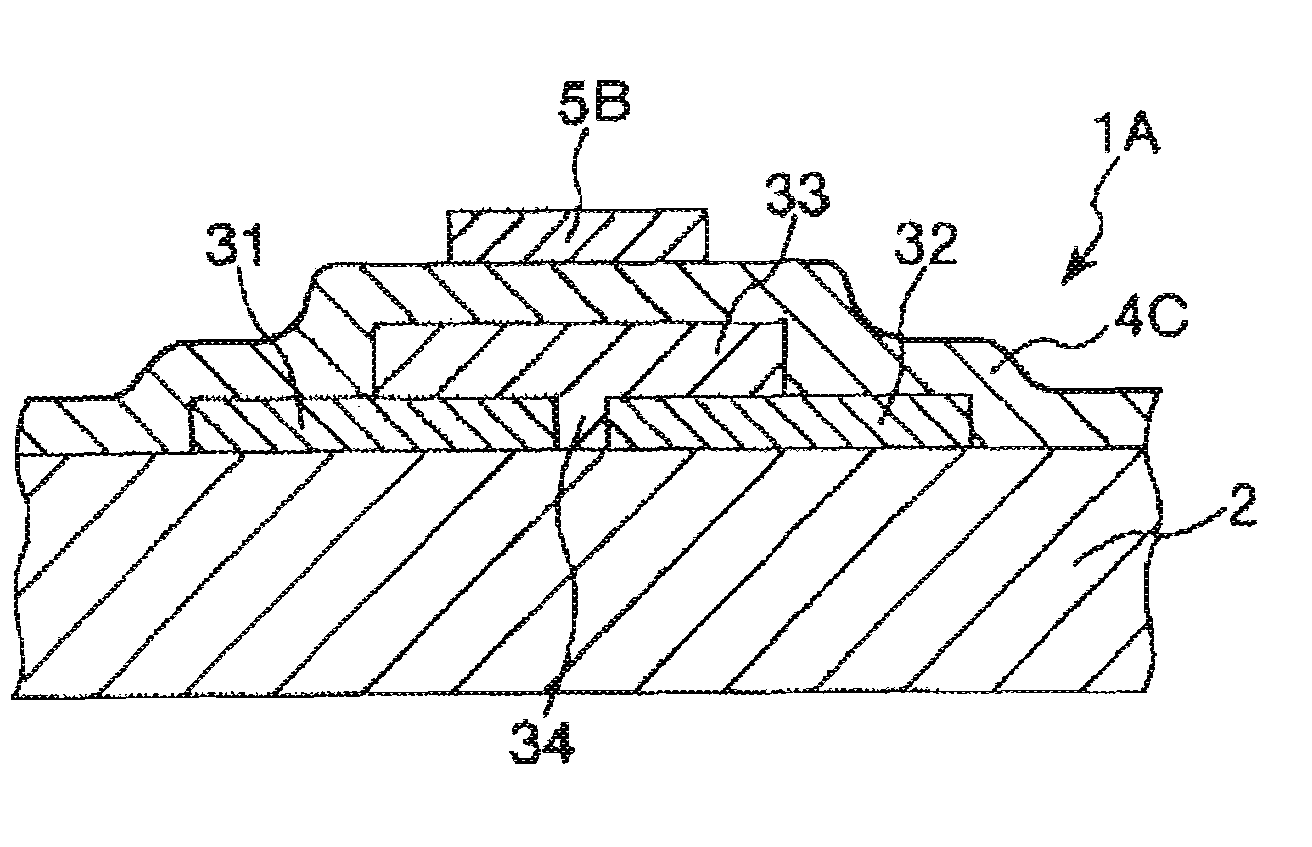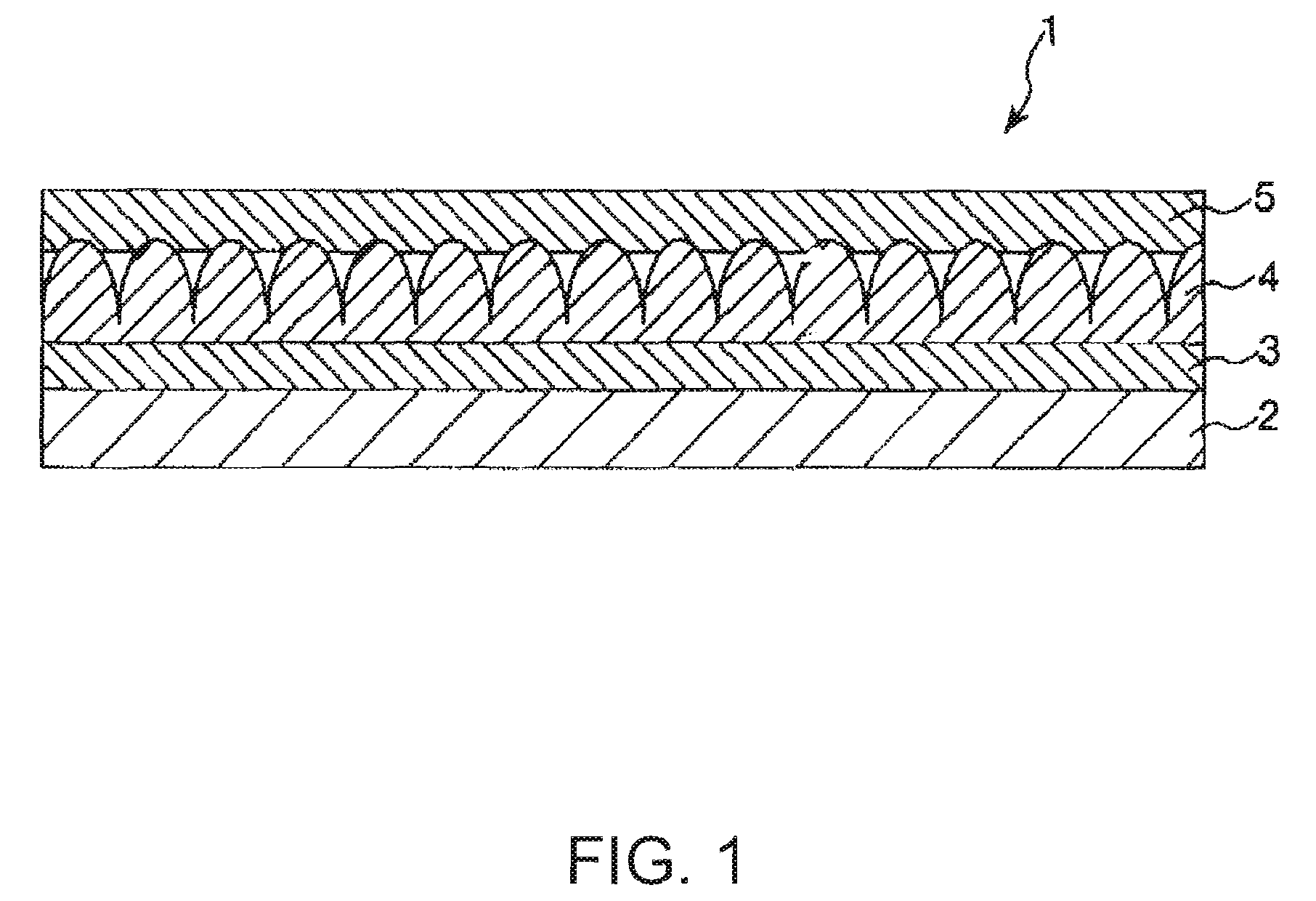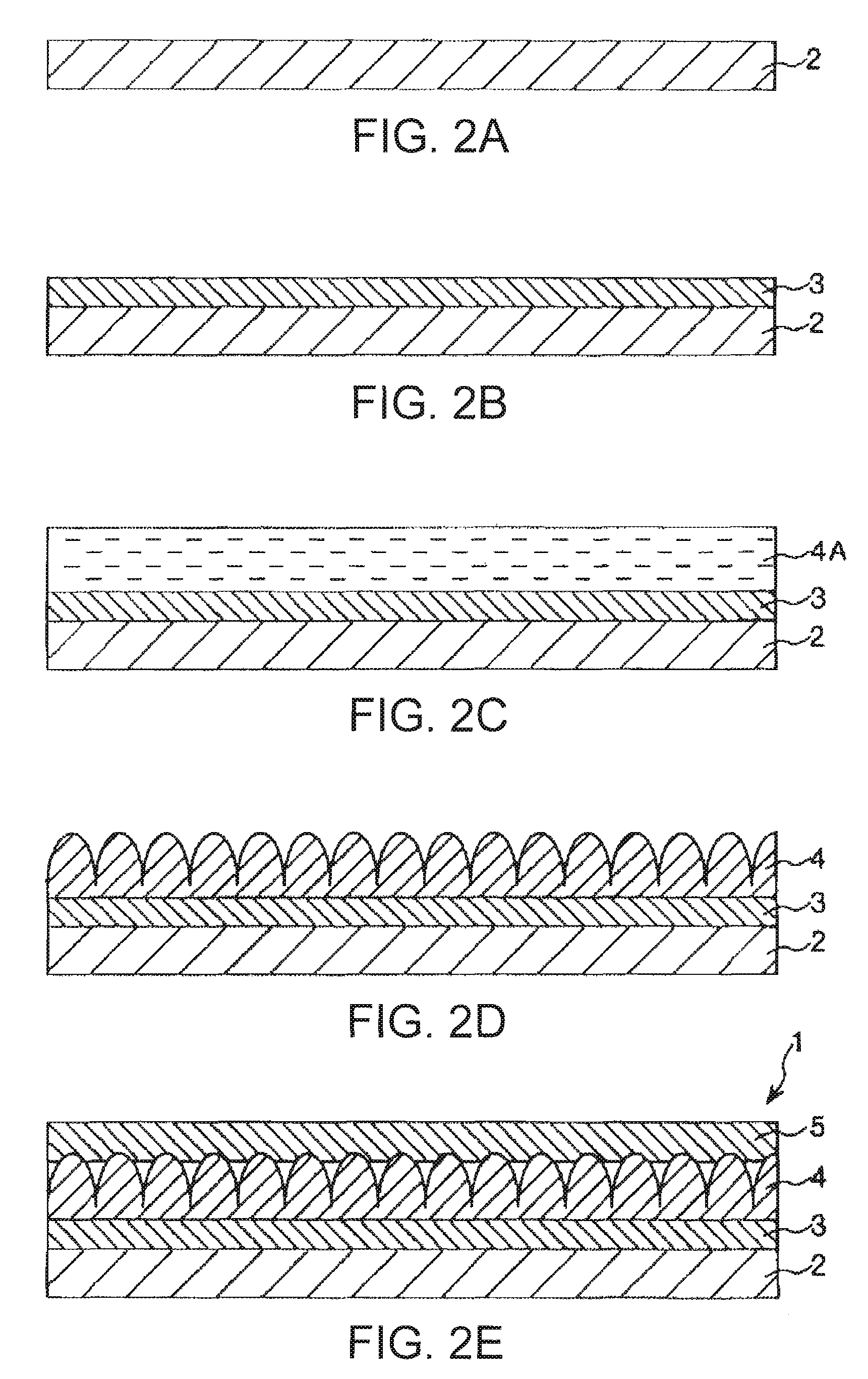Memory element, method for manufacturing memory element, memory device, electronic apparatus and method for manufacturing transistor
- Summary
- Abstract
- Description
- Claims
- Application Information
AI Technical Summary
Benefits of technology
Problems solved by technology
Method used
Image
Examples
first embodiment
[0047]A first embodiment of the invention is hereinafter described.
[0048]Memory Element
[0049]A memory element in other words a memory element formed by a method for manufacturing a memory element according to the first embodiment is described with reference to FIG. 1.
[0050]FIG. 1 is a longitudinal sectional view of a memory element according to the first embodiment. The upper side in FIG. 1 is hereinafter referred as the “upper side” and the lower side in FIG. 1 is referred as the “lower side” for convenience of explanation. The memory element 1 shown in FIG. 1 includes a substrate 2, on top of which there is a first electrode 3 (a lower electrode), on top of which there is a ferroelectric layer 4 (a recording layer), and on top of which there is a second electrode 5 (an upper electrode). In other words, in the memory element 1, a structure (or a capacitor) including the ferroelectric layer 4 between the first electrode 3 and the second electrode 5 is supported by the substrate 2 in...
second embodiment
[0130]A second embodiment of the invention is now described with reference to FIG. 5.
[0131]FIG. 5 is a schematic sectional view of film forming equipment which is used in a method for manufacturing a memory element according to the second embodiment.
[0132]In the following description, structures or elements of the second embodiment which are different from those of the first embodiment described above will be mainly described and explanations for the same elements and configurations as those of the first embodiment will be omitted.
[0133]The second embodiment is almost same as the first embodiment other than the film forming equipment used to form the ferroelectric layer 4.
[0134]More specifically, film forming equipment 10A according to the second embodiment has a substrate holder 12A that holds the substrate 2. The substrate holder 12A is supported through the rotation shaft 15 that can rotate around the axis extending in the thickness direction of the substrate 2 and by a rotation ...
third embodiment
[0136]A third embodiment of the invention is now described with reference to FIG. 6.
[0137]FIG. 6 is a schematic sectional view of film forming equipment which is used in a method for manufacturing a memory element according to the third embodiment.
[0138]In the following description, structures or elements of the third embodiment which are different from those of the first embodiment described above will be mainly described and explanations for the same elements and configurations as those of the first embodiment will be omitted.
[0139]The third embodiment is almost same as the first embodiment other than a structure of the film forming equipment used to form the ferroelectric layer 4.
[0140]Referring to FIG. 6, a material supplying source 13A containing the electrode material 5A and a substrate holder 12C for holding the substrate 2 are provided in a chamber (unshown) in third embodiment. A slit plate 16 that has a slit-shaped opening 16A is further provided between the material suppl...
PUM
 Login to View More
Login to View More Abstract
Description
Claims
Application Information
 Login to View More
Login to View More - R&D
- Intellectual Property
- Life Sciences
- Materials
- Tech Scout
- Unparalleled Data Quality
- Higher Quality Content
- 60% Fewer Hallucinations
Browse by: Latest US Patents, China's latest patents, Technical Efficacy Thesaurus, Application Domain, Technology Topic, Popular Technical Reports.
© 2025 PatSnap. All rights reserved.Legal|Privacy policy|Modern Slavery Act Transparency Statement|Sitemap|About US| Contact US: help@patsnap.com



